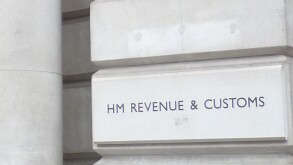
|
Tim Stewart |
Vinelight Nominees Limited v CIR is the New Zealand Court of Appeal's latest decision on the general anti-avoidance rule (GAAR) and the tax resident test for companies. The decision also addresses the time limitation on Inland Revenue's ability to re-assess taxpayers, and a taxpayer's ability to raise new arguments in the course of court proceedings. The case arises from a restructure of a family's investments in 1998, following advice from EY. The family carried on business in New Zealand through Vinelight Investments Limited (VIL), a New Zealand tax resident company. The family also owned Weyand Investments Limited (Weyand), a Hong Kong incorporated company.
The main consequences of the restructure were:
The Vinelight Trust, and its trustee, Vinelight Nominees Limited (Vinelight) were created.
VIL agreed to pay management fees to Vinelight at a rate chosen to offset VIL's taxable income.
Vinelight assumed liability for a debt then owed by VIL to Weyand, and for the first time interest became payable. The interest rate was chosen to ensure that the interest would offset the management fees that Vinelight received from VIL.
Vinelight registered itself and the debt for purposes of the approved issuer levy (AIL) regime. (The regime allows qualifying borrowers to pay the levy, at 2% on interest payments, in lieu of non-resident withholding tax (NRWT) which would otherwise be imposed at up to 15%.)
The tax residence question
The arrangement would achieve its intended objective only if Weyand (the recipient of the interest) was not tax resident in New Zealand. Inland Revenue argued that until March 2003 Weyand was tax resident because it had its centre of management in New Zealand. The court noted that the centre of management limb of the test for tax residence should not be conflated with the alternative test based on directorial control, and emphasised that the test is a question of fact and substance.
In finding that Weyand's centre of management was in New Zealand until March 2003, the court relied on the fact that Rodney and Sandra (who lived in New Zealand) between them consulted EY about the structure and its implementation, demanded interest on the debt from Weyand (addressing the demand to their residential address in New Zealand), decided that the interest rate ought to be reduced, and attended to the preparation of financial statements in New Zealand. On this basis, at least for a company whose activities are largely passive (the receipt of interest income), it would seem that the performance of administrative tasks in New Zealand may in some cases suffice for the company to have its centre of management in New Zealand.
The tax avoidance question
Inland Revenue accepted that from March 2003 Weyand was not tax resident in New Zealand but argued (and the court accepted) that the interest paid to Weyand should not qualify for the concessionary AIL regime because the GAAR applied.
The court accepted that the arrangement's purpose was set out in documents prepared by EY explaining the tax consequences of the restructure. The court's reliance on EY's advice (while unsurprising given earlier GAAR decisions in which the court has referred extensively to statements made by tax advisors) is controversial. When determining whether an arrangement has a more than incidental purpose or effect of tax avoidance, the purpose or effect should be ascertained objectively from what the arrangement achieves. Statements made by an adviser should represent no more than that adviser's opinion. Moreover, the fact an arrangement results in tax savings should not be equated with that arrangement having tax avoidance as a purpose or effect.
Tim Stewart (tim.stewart@russellmcveagh.com)
Russell McVeagh
Tel: +64 4 819 7527
Fax: +64 4 463 4503
Website: www.russellmcveagh.com









